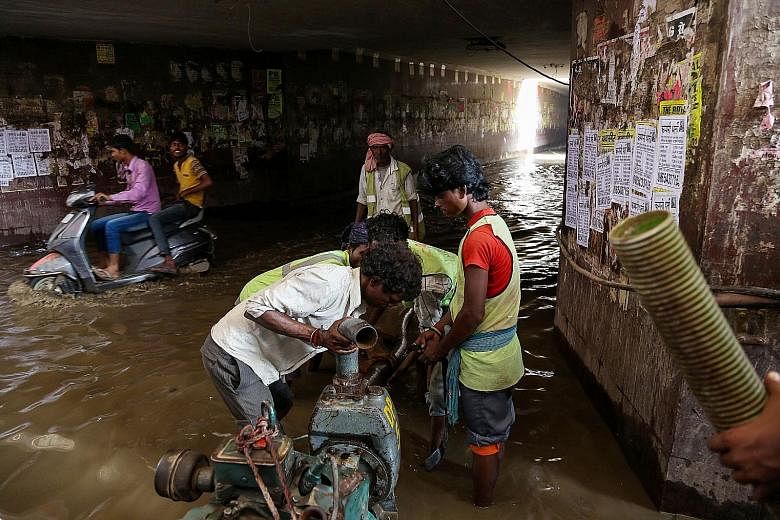Four months ago, 32-year-old Ashish Gambhir moved from rented accommodation into his own home in an upmarket condominium with electricity back-up, a swimming pool and 24/7 water supply in Gurgaon, popularly known as Millennium City.
But he was left wondering if his quality of life had indeed improved after getting stuck in a 12-hour traffic jam last week due to severe waterlogging after heavy rains.
"The commute from work to home is 45 minutes. A few months back, I was stuck for three hours, then three to four weeks ago, it was six hours. Now it is 12 hours. I don't know what's next - 24 hours?" asked the exasperated economist with a private consultancy firm who moved to Gurgaon five years ago.
"The problem in Gurgaon is that the public sector and government are moving at a completely different pace from the private sector."
Gurgaon, recently renamed Gurugram, is a satellite city of Delhi in Haryana state. It is India's glitziest metropolis boasting high-rise steel and glass buildings, fancy restaurants, golf courses, over two dozen malls and many upmarket residential gated communities built by private developers.
Yet, this symbol of the country's growing affluence is also a prime example of poor planning. Water and electricity are in short supply, many roads are potholed, sanitation and drainage facilities remain poor and public transport is undeveloped.
The moment residents step out of their luxury condominiums or plush offices, they are faced with infrastructure comparable to any found in an underdeveloped city
"You can't go on a road for 50m without encountering a pothole," said Mr P. K. Jain, founder president of the Gurgaon Chamber of Commerce. "The Haryana government earns 60 per cent of its revenue from Gurgaon. Yet, they spend peanuts (on infrastructure)," he said.
"People want to commute easily. But if it takes 41/2 hours to get to work every day, ease of business is nothing," he added.
Gurgaon, which has the third highest per capita income in India, was developed over the past three decades by private developers who initially touted it as a cheaper alternative to living in Delhi.
In 1997, General Electric opened an office there and others followed. Now companies such as Microsoft, Dell and Google are among more than 200 leading ones with offices in the city.
Still, many also see it as a challenge as India moves to boost infrastructure in cities under a smart cities initiative.
Professor Sanjay Srivastava, author of Entangled Urbanism: Slum, Gated Community And Shopping Mall In Delhi And Gurgaon, contends that Gurgaon's problem is that there are "far too many government bodies that work at cross-purposes and a private sector (that) has far too great a say".
"Housing and commercial projects are built before any surrounding infrastructure. Once a private project is completed, no one takes responsibility for roads, traffic lights, street lights, footpaths etc," he noted.
While Gurgaon remains a top destination for companies because of its conducive business environment and good housing, poor infrastructure has hit productivity.
"Last week, only 50 per cent of the workforce could make it to work (because of the rains)," said Mr Ashish Kashyap, CEO of Ibibo Group, an online travel company.
The Haryana government has been working to improve infrastructure - expanding the metro as well as building new roads and flyovers.
But all this is barely keeping pace with the growth of the city, which has a population of 1.7 million.
"Gurgaon is booming. The solution is not rocket science. Government departments need to get better coordinated; policing, traffic and public transport need to improve," said Mr Pramod Bhasin, founder of Genpact, a global business process management and services corporation.
"With better infrastructure, it could become the most vibrant city in India."

